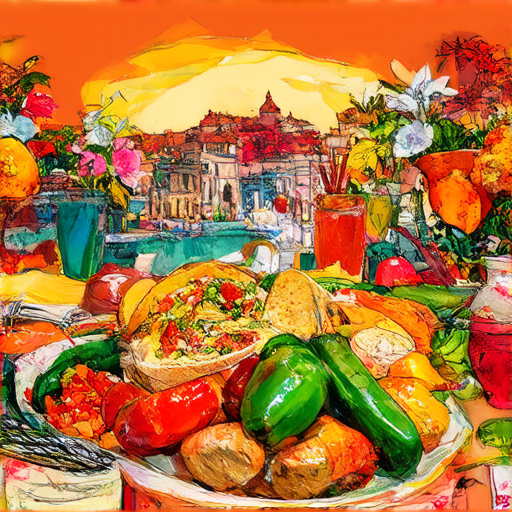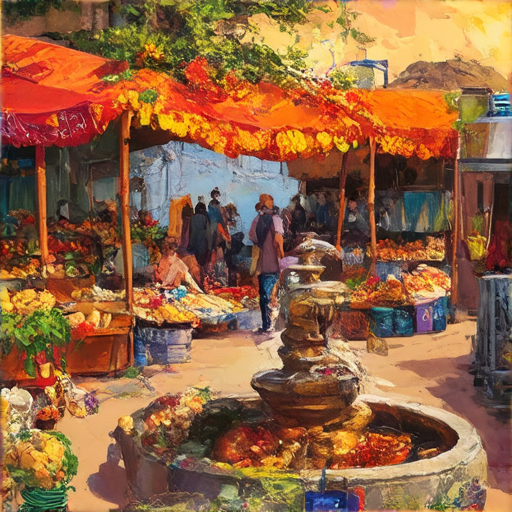Located in the heart of central Mexico, Querétaro is a city renowned for its rich cultural heritage and delectable local cuisine. As one of the oldest cities in Mexico, Querétaro boasts a unique blend of colonial architecture, vibrant arts scene, and mouth-watering traditional dishes. From the famous carnitas to the authentic tacos al pastor, Querétaro offers an unparalleled gastronomic experience that showcases the diversity and richness of Mexican flavors. With its well-preserved historic center, bustling markets, and modern amenities, Querétaro has become a popular destination for foodies and travelers alike, eager to discover the secrets behind its exceptional local food scene.
This comprehensive guide delves into the world of Querétaro’s culinary delights, exploring the city’s most iconic eateries, hidden gems, and local specialties. By uncovering the stories behind the city’s beloved dishes, we aim to provide readers with a deeper understanding of what makes Querétaro’s food so extraordinary. Whether you’re a seasoned food enthusiast or just starting to explore the world of Mexican cuisine, this guide promises to take you on a journey through the sights, sounds, and flavors of Querétaro’s incredible local food scene.

Quertaro’s Culinary Delights
Located in the state of Querétaro, Mexico, this city boasts a rich gastronomic heritage shaped by its pre-Hispanic and colonial past.
- Traditional Dishes:
- Enchiladas Queretanas: A classic dish consisting of corn tortillas filled with meat or cheese, rolled, and covered in a spicy tomato sauce and melted cheese.
- Gorditas: Thick, round corn tortillas stuffed with various fillings such as shredded chicken, beef, or beans, often served with salsa and sour cream.
- Pozole: A hearty soup made from hominy and pork or chicken, garnished with lime wedges, onions, and tortilla chips.
Key Ingredients and Flavors
The cuisine in Quertaro features a blend of indigenous and European influences, resulting in unique flavor profiles and ingredients.
- Corn:
- Broken bits of corn are a staple ingredient in many traditional dishes, adding texture and flavor.
- Chilies:
- Spicy chilies are commonly used to add heat and depth to sauces and salsas.
- Meat and Poultry:
- Beef, chicken, and pork are popular protein sources, often slow-cooked in rich sauces.
Regional Specialties
Quertaro has several regional specialties worth trying during your visit.
- Empanadas:
- Flaky pastry pockets filled with meat, cheese, or vegetables, often served as a snack or appetizer.
- Tamales:
- Steamed corn dough filled with meat, cheese, or vegetables, wrapped in corn husks and served with salsa and lime.
What Makes Querétaro Special
Located in central Mexico, Querétaro is a city rich in history and cultural significance.
- Well-preserved Spanish colonial architecture: Querétaro’s historic center boasts an impressive array of well-preserved buildings, showcasing the city’s rich colonial past.
- UNESCO World Heritage designation: In 1996, Querétaro’s historic center was designated a UNESCO World Heritage site, recognizing its exceptional cultural and historical value.
- Indigenous roots**: Founded by the Otom Indians in 1540, Querétaro has a deep connection to its indigenous heritage.
- Aztec influence**: Incorporated into the Aztec empire in 1446, Querétaro reflects the significant impact of the Aztecs on the region’s history and culture.
- Cultural attractions**: Visitors can explore the city’s many museums, galleries, and festivals, which celebrate its rich cultural heritage.
Key Factors Contributing to Querétaro’s Unique Character
The combination of its indigenous and colonial past, along with its well-preserved architecture and cultural attractions, makes Querétaro a truly unique and fascinating destination.
Historical Significance
Querétaro played a crucial role in Mexico’s struggle for independence, serving as a key location for the country’s early leaders.
Economic Importance
Today, Querétaro is a thriving industrial hub, with a strong focus on manufacturing and technology.
Tourism and Cultural Events
The city hosts various festivals and events throughout the year, attracting visitors from around the world.

The Most Consumed Food in Mexico City
Mexico City, being the capital of Mexico, offers a diverse culinary experience reflecting its rich cultural heritage.
- Tacos al pastor: A classic Mexican dish originating from Lebanese immigrants who introduced the concept of vertical spit roasting meat, tacos al pastor have become a staple in Mexico City’s street food scene.
- Pozole: A hearty soup made from hominy and pork or chicken, pozole is a comforting and flavorful option often served during special occasions and celebrations.
- Chiles rellenos**: Roasted poblano peppers stuffed with cheese, battered, and fried, chiles rellenos are a popular choice among locals and tourists alike.
- Enchiladas mole: These traditional enchiladas are smothered in a complex and rich sauce made from chocolate, spices, and nuts, offering a unique taste experience.
- Elote: Grilled corn on the cob slathered with mayonnaise, cotija cheese, chili powder, and lime juice, elote is a simple yet satisfying snack enjoyed throughout the city.
- Chilaquiles: Fried tortilla chips cooked in salsa and topped with cheese, sour cream, and eggs, chilaquiles are a breakfast favorite among locals.
- Carne asada: Thinly sliced grilled beef, often served with beans, rice, and tortillas, carne asada is a popular choice for those seeking a filling meal.
- Empanadas: Flaky pastry pockets filled with meat, cheese, or vegetables, empanadas are a convenient and delicious snack available at bakeries and street vendors across the city.

Key Industries and Products of Queretaro
Queretaro, located in the heart of Mexico’s El Bajio region, serves as a vital hub for various manufacturing sectors. The state is renowned for its diverse economy, which encompasses several prominent industries.
- Automotive Assembly: Queretaro has established itself as a leading center for automotive production, hosting numerous international companies such as Volkswagen, Ford, and General Motors.
- Auto Parts Manufacturing: The state boasts a significant presence of auto parts manufacturers, including prominent players like Continental AG and Bridgestone Americas.
- Aerospace Industry: Queretaro’s aerospace sector is comprised of companies specializing in aircraft components, avionics, and satellite technology, with notable participants including Lockheed Martin and Northrop Grumman.
- Household Appliance Manufacturing: The state is home to a considerable number of household appliance manufacturers, including prominent brands like Whirlpool and LG Electronics.
Strategic Advantages
Several factors contribute to Queretaro’s success as a manufacturing hub:
- Proximity to Major Cities: Queretaro’s strategic location allows for easy access to major cities like Mexico City and Guadalajara, facilitating transportation and logistics.
- Skilled Workforce: The state boasts a highly skilled workforce, with many residents possessing expertise in engineering, manufacturing, and technical fields.
- Competitive Costs: Queretaro offers competitive costs for labor, land, and infrastructure, making it an attractive destination for investors.
Government Support and Incentives
The Mexican government provides various incentives to support the growth of the manufacturing sector in Queretaro, including:
- Tax Incentives: The government offers tax breaks and exemptions to encourage investment in the region.
- Infrastructure Development: The government invests heavily in infrastructure development, including roads, ports, and logistics facilities.
- Training and Education Programs: The government implements training and education programs to enhance the skills of local workers and attract foreign talent.
Main Industry in Quertaro
The primary industry in Quertaro is the aerospace industry, which has seen significant growth over the past few years. This sector has positioned the state as a crucial hub for manufacturing and exporting aerospace components and products, drawing international companies into the fold.
Key Drivers of Growth
Several factors have contributed to the aerospace industry’s rapid expansion in Quertaro:
- Strategic Location:
- Proximity to major markets and transportation hubs.
- Government Incentives:
- Skilled Workforce:
- Infrastructure Development:
Aerospace Component Production
Quertaro-based companies specialize in producing various aerospace components, including:
- Structural Components:
- Engine Parts:
- Avionics Equipment:
- Mechanical Components:
Export Opportunities
The state’s aerospace industry offers numerous export opportunities, particularly to countries in North America and Europe, due to its proximity to these regions and the growing demand for aerospace products.
Global Recognition
Quertaro’s aerospace industry has garnered international recognition, with several prominent companies operating in the state, including:
- Major Aerospace Manufacturers:
- Component Suppliers:
- Research and Development Centers:
Future Prospects
As the aerospace industry continues to evolve, Quertaro is well-positioned to capitalize on emerging trends and technologies, solidifying its position as a leading center for aerospace production and innovation.
Oaxaca’s Agricultural Production
Oaxaca produces a diverse array of crops, including:
- Corn
- Agave
- Peanuts
- Coffee
- Fruits:
- Mangoes
- Vegetables
These crops contribute significantly to the state’s agricultural economy, with many being exported to international markets such as the United States.
Agricultural Importance in Oaxaca
Agriculture plays a vital role in Oaxaca’s economy, accounting for approximately 40% of the state’s GDP. The production of these crops supports local communities and provides employment opportunities for farmers and rural residents.
Key Export Markets
Mangoes are one of the main export products of Oaxaca, with significant shipments going to the United States. Other crops, such as coffee and peanuts, are also exported to various countries, contributing to the state’s foreign exchange earnings.
Challenges Facing Oaxacan Farmers
Despite its importance, agriculture in Oaxaca faces several challenges, including:
- Climate change
- Soil degradation
- Lack of access to credit and markets
- Political instability
These factors can impact crop yields, farmer livelihoods, and the overall sustainability of agricultural production in the region.
Opportunities for Sustainable Agriculture
To address these challenges, there is a growing focus on sustainable agriculture practices in Oaxaca. Initiatives aimed at promoting organic farming, agroforestry, and conservation agriculture have shown promise in improving soil health, reducing chemical use, and increasing crop resilience.
The Oaxacan government has implemented various programs to support farmers and promote sustainable agriculture. These initiatives include training programs, technical assistance, and subsidies for organic farming and conservation agriculture.

0 Comments